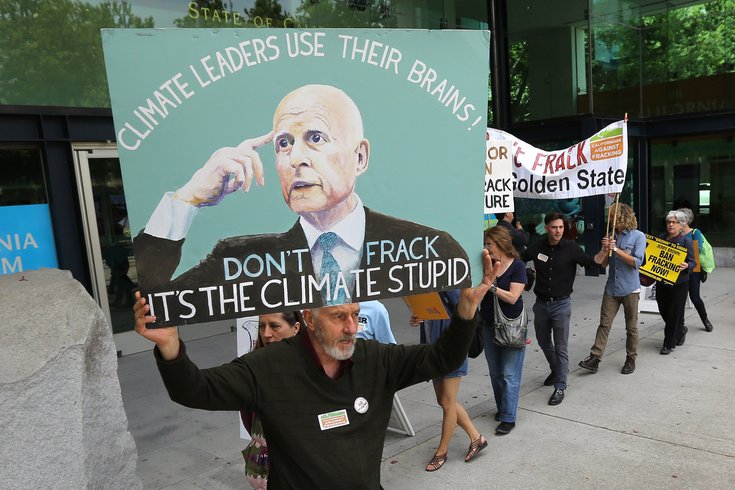
May 20, 2015
 Rich Pedroncelli/AP
Rich Pedroncelli/AP
In this May 19, 2014 file photo Richard Gray joined others in a demonstration calling on Gov. Jerry Brown to end hydraulic fracturing for oil and gas, in Sacramento, Calif. Brown issued an executive order to aggressively reduce emissions.
The target, which is based on a 1990 benchmark, will allow the individual governments, which collectively represent more than $4.5 trillion in GDP and 100 million people, to tailor reduction plans to fit their regional needs.
Called "Under 2 MOU" for a Memorandum of Understanding designed to help keep global temperature increase below 2 degrees Celsius, the pact seeks to provide a template for countries to follow to cut emissions.
The temperature mark is the warming threshold at which governments say climate change could become catastrophic and irreversible.
Later this year at a United Nations climate change conference in Paris, negotiators will attempt to reach an international agreement for nations to cut emissions.
“This global challenge requires bold action on the part of governments everywhere,” California Governor Jerry Brown said on Tuesday. “It’s time to be decisive. It’s time to act.”
Signatories of the agreement were Acre, Brazil; Baden-Württemberg, Germany; Baja California, Mexico; Catalonia, Spain; Jalisco, Mexico; Ontario, Canada, British Columbia, Canada; Wales, and the U.S. states of Oregon, Vermont and Washington.
Ontario Environment Minister Glen Murray described the agreement as one of the strongest of any under international negotiations and gives sub-national governments a common voice at the Paris conference.
"We are actually locking ourselves in to a very clear set of objectives and a very clear way of demonstrating how we achieve those objectives,” Murray said in an interview with Reuters on Tuesday. “That's an historic first."
In April, Ontario said it plans to join California and Quebec's carbon cap-and-trade system, North America's largest.
California sets an overall limit on carbon emissions and allows businesses to hand in permits to meet their obligations. The governor in April issued an executive order to cut greenhouse gas emissions 40 percent by 2030.
The plan for how California will achieve the 2030 target will be hammered out over the next year by the California Air Resources Board (ARB), which oversees the cap-and-trade program.